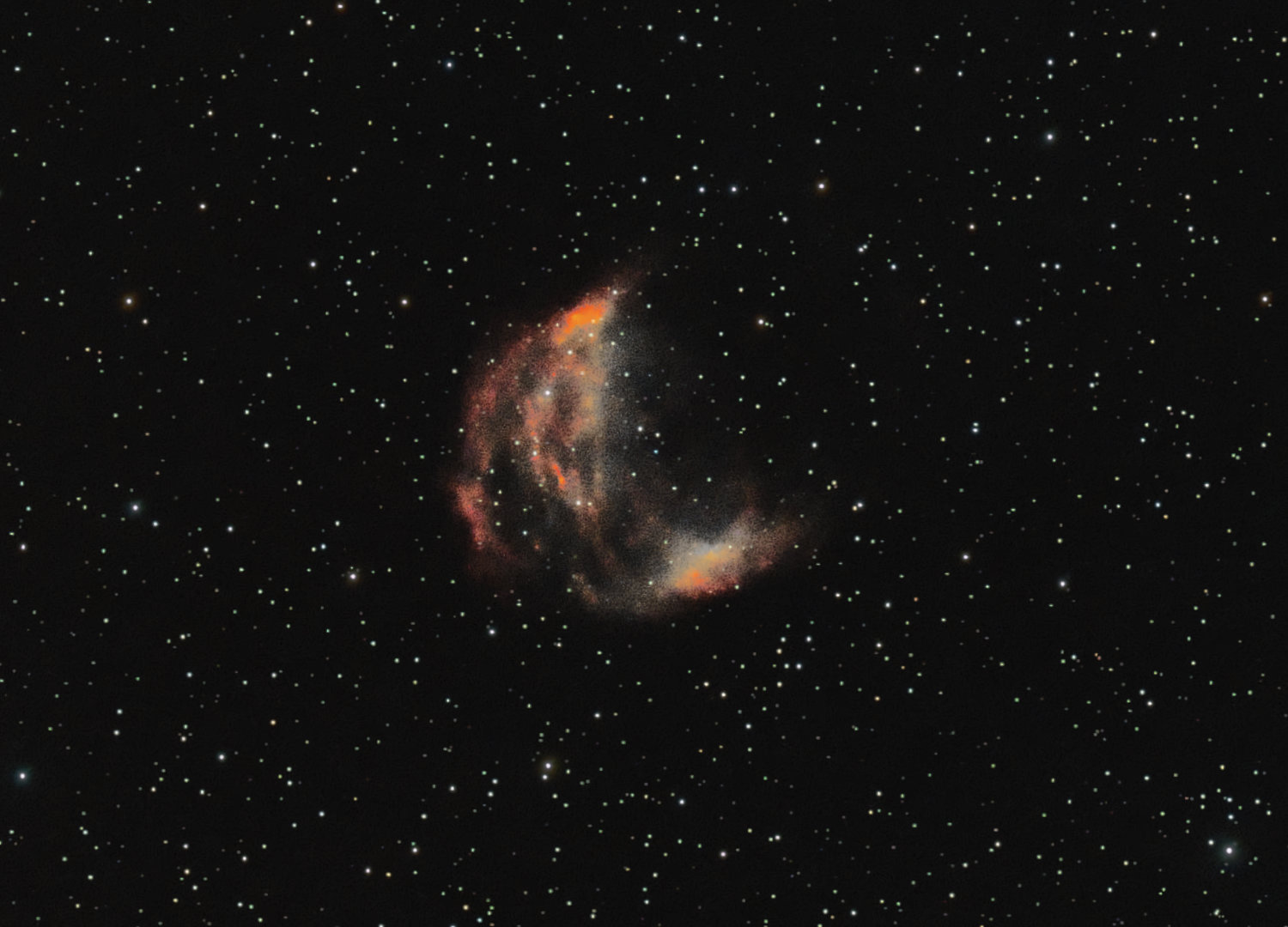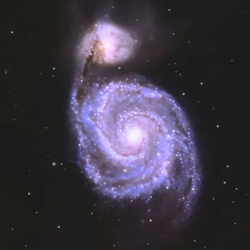The Medusa Nebula is an intricate ghostly structure with tendrils of gas stretching like the serpentine hair of its namesake from Greek mythology. The Gorgon Medusa was a monstrous creature with living snakes in place of hair, and was known for her ability to turn anyone who looked at her into stone.
These glowing red remnants are the outer layers of a star that has exhausted its nuclear fuel, casting off its outer shell into space while its core contracts into a white dwarf — a small, incredibly dense remnant that will slowly fade over billions of years. Our sun will undergo a similar fate some five billion years in the future.

More Medusa Nebula trivia#
The Medusa Nebula is roughly one-third the size of the moon in the night sky. However it is very faint with low surface brightness, and requires long exposures to make out.
It was discovered only as recently as 1955 (about the time I got my first telescope!) and hence well over half a century too late to receive an NGC or IC catalog number.
The Medusa Nebula was only officially identified as a planetary nebula in the 1970s. Before then, astronomers believed it to be a supernova remnant, the aftermath of a stellar explosion. However, further studies showed that its structure and spectral characteristics matched those of a planetary nebula, an object formed by a star shedding its outer layers in a gradual process rather than a violent explosion.
The Medusa Nebula spans approximately four light-years across and lies about 1,500 light-years away from Earth. It is estimated to be 8800 years old.
Located in the constellation Gemini, it is also cataloged as Sharpless 2-274 and as Abell 21 (after the American astronomer George Abell, who discovered it on the Palomar Observatory Sky Survey photo plates).
Since the images in this blog are relatively large and contain a lot of detail, if you are using a phone or a small tablet, you might want to consider returning sometime when you can use a computer with its larger screen.
